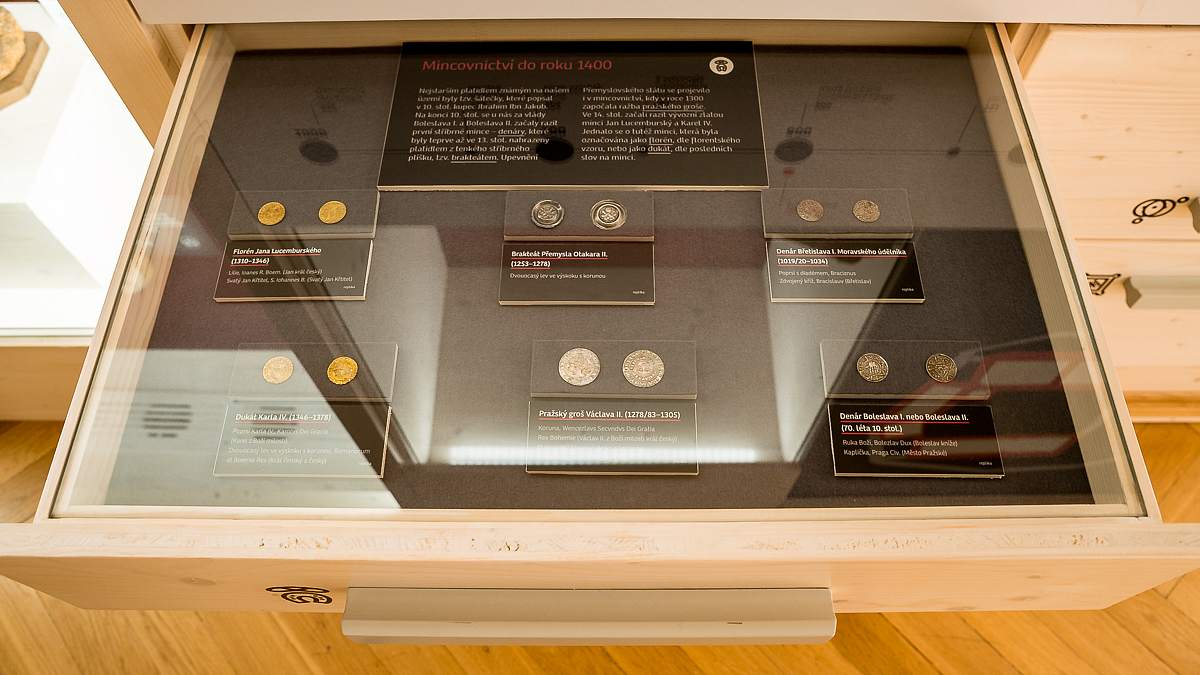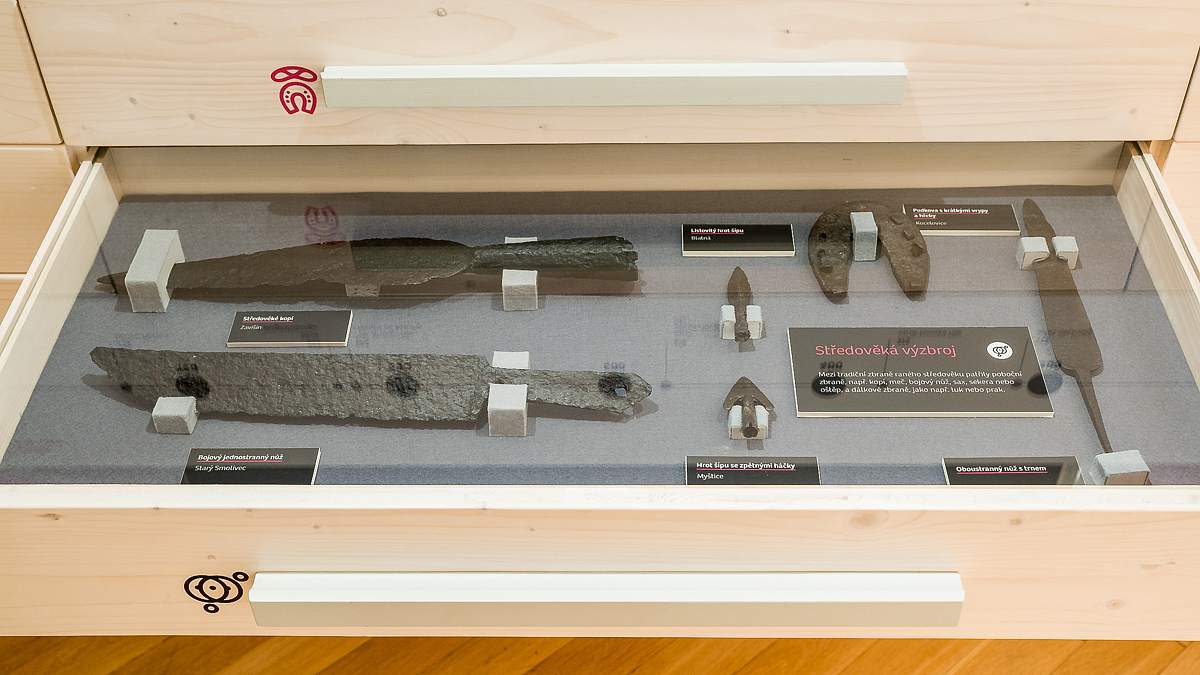TRADE ROUTES
In the 8th to 12th centuries, a north-south trade route from Prague to Passau passed through the Blatná region. This route was used to transfer money, goods and technological innovations, which can be also observed in archaeological findings. Probably the oldest such import from the early Middle Ages is an iron lance with a foliate point and an octagonal sheath, which was discovered in the village of Zavišín by Mr. Vlk. In 1988, an analogous weapon was found during surface collections south of the quadrangular rampart at Záhrobí near Bělčice. Both weapons can be dated back to the 8th to 9th centuries and they originate from East Francia.
A more convincing piece of evidence for contacts outside the region is the finding of a coin depot in a ceramic container near the village of Lažánky. It was uncovered during ploughing in 1911. The treasure or depot contained approximately 450 silver dēnāriī from the years 1100 to 1125. Among the coins were those minted by dukes Bořivoj II and Vladislaus I. Only the ceramic pot made it to the museum though, while several coins ended up at the Hussite Museum in Tábor. Most of the silver treasure remained with the finder J. Stejskal from Blatná.
These incoming innovations manifested themselves at the turn of the early and high Middle Ages, i.e., in the 13th to 14th centuries. Back then, a much heavier asymmetric ploughshare started to be used for ploughing. Its weight of approx. 3 to 7 kg allowed for deeper ploughing, better soil loosening and a higher field yield compared to the older lightweight ploughshare. The asymmetric ploughshare also testifies to the existence of a heavy plough consisting of a coulter and a turning plate.


